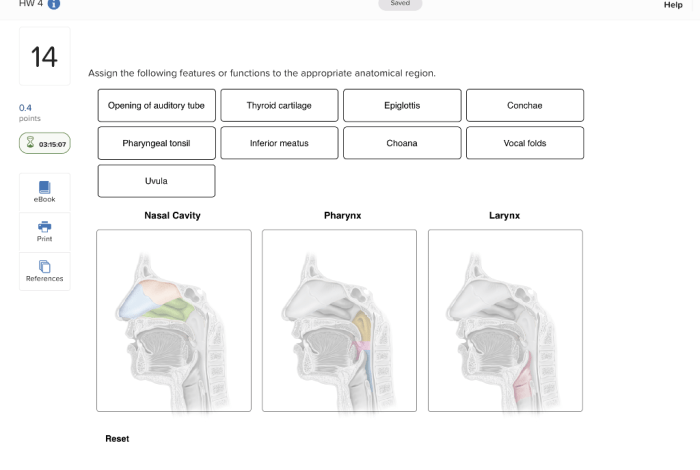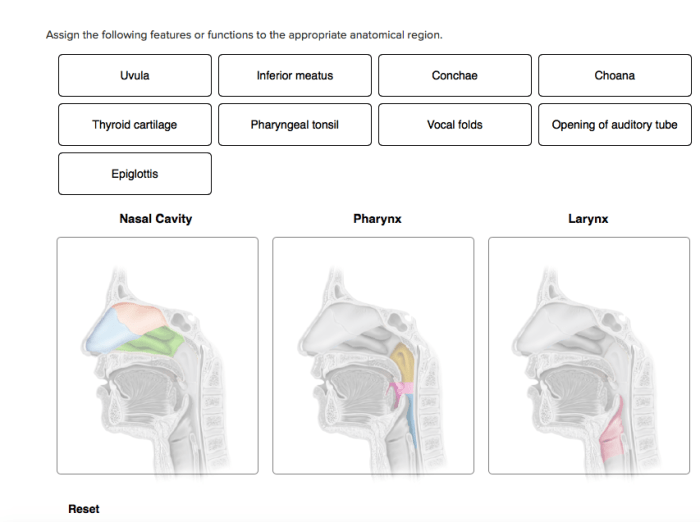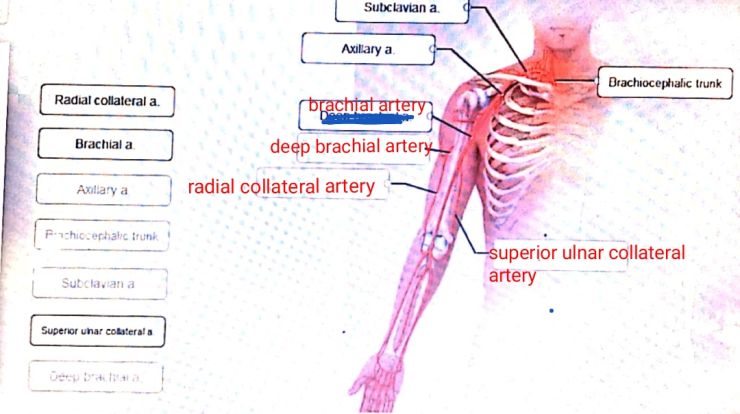Assign the following features to the correct anatomical region – Embark on an anatomical journey with us as we delve into the intricate tapestry of human anatomy, where we unravel the mysteries of assigning anatomical features to their rightful anatomical regions. This exploration promises a captivating odyssey through the human body, revealing the harmonious interplay of structures and their functions.
As we navigate the complexities of the head and neck, thorax, abdomen and pelvis, upper limb, and lower limb, we will meticulously dissect each region, unraveling the intricate web of anatomical relationships. Our quest will illuminate the functional significance of each structure, showcasing how they collectively orchestrate the symphony of human movement, sensation, and life.
Head and Neck: Assign The Following Features To The Correct Anatomical Region

The head and neck region is a complex and vital part of the human body. It contains a wide variety of anatomical structures that serve a multitude of functions. These structures can be broadly categorized into three main groups: the anterior, posterior, and lateral regions.The
anterior region of the head and neck includes the face, mouth, and throat. The face is home to the eyes, nose, and mouth, which are all essential for sensory perception and communication. The mouth contains the teeth, tongue, and salivary glands, which are involved in food processing and digestion.
The throat, also known as the pharynx, is a muscular tube that connects the mouth and nasal cavity to the esophagus and larynx.The posterior region of the head and neck includes the skull, brain, and spinal cord. The skull protects the brain and other delicate structures within the head.
The brain is the central control center of the nervous system, and the spinal cord transmits signals between the brain and the rest of the body.The lateral region of the head and neck includes the ears, neck muscles, and lymph nodes.
The ears are responsible for hearing and balance. The neck muscles support the head and allow for a wide range of motion. The lymph nodes are part of the lymphatic system, which helps to filter out bacteria and other harmful substances from the body.The
head and neck region is a highly interconnected and interdependent system. The various structures within this region work together to perform a wide range of functions, including:* Sensory perception
- Communication
- Food processing and digestion
- Respiration
- Circulation
- Protection of vital organs
- Movement
FAQ Section
What are the key anatomical regions of the human body?
The major anatomical regions include the head and neck, thorax, abdomen and pelvis, upper limb, and lower limb.
Why is it important to assign anatomical features to their correct regions?
Accurate assignment facilitates a systematic understanding of anatomical relationships, functional organization, and clinical applications.


